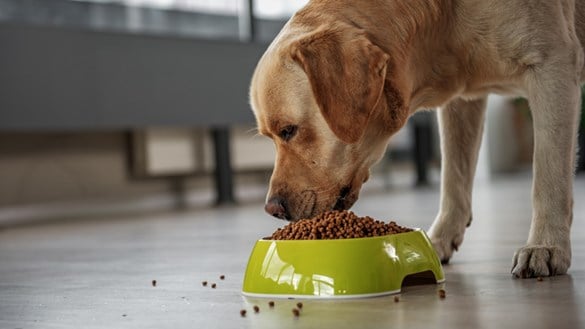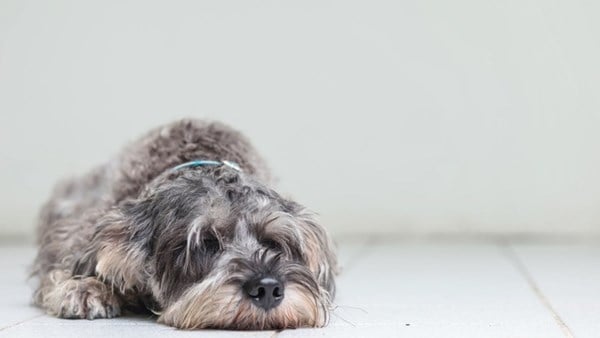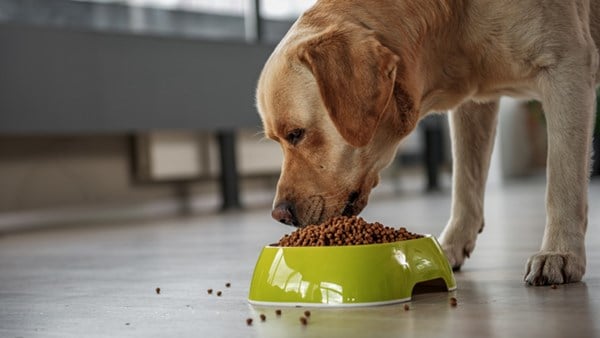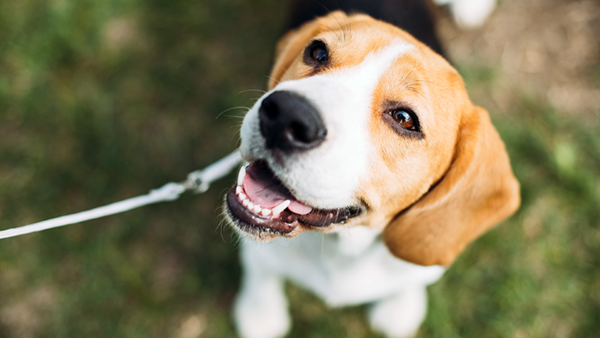Obesity In Dogs
When your dog is a much-loved family member who thrives on constant love and attention, you want to make sure they’re happy and healthy too. If you’re worried they’re becoming overweight, now is the time to nip it in the bud before it affects their health and wellbeing.

How do I know if my dog is overweight?
Whatever breed of dog you have, you should be able to feel their ribs without a thick layer of fat covering them. You may also notice your dog’s stomach bulging out to the sides if you stand over them and look down. A dog’s chest should be wider than its stomach but if you can’t see any noticeable difference between their chest and waist then they’re packing a few extra unnecessary pounds.
Other signs can include reduced mobility, excessive panting, trouble grooming themselves and an unwillingness or inability to exercise.
Risks of obesity in dogs
Obesity can cause lead to severe health problems in dogs, reducing their quality of life and shortening life expectancy. Even moderately overweight dogs are at risk of poorer health.
Being overweight can lead to urinary incontinence, back and ligament problems, breathing problems, cancer and heatstroke. In addition, your dog is at greater risk of heart disease and diabetes too.
In severe cases, a dog’s windpipe may collapse, or they may develop hypothyrodisim or Cushings disease, both serious illnesses which require lifelong specialist care.
How do I prevent my dog from becoming overweight?
You should offer your dog a complete dog food that provides all their nutritional needs. Puppies will have different energy requirements to older dogs and similarly, small and large breeds will differ. So, rather than choosing a general dog food, pick one that’s specific to their profile. Portion control is key – make sure you feed them the recommended amount.
Treats should be kept to a minimum and where possible you should switch out higher calorie ones for things like carrot sticks.
And finally, get them active. Plenty of walks will help keep their weight under control and you get to enjoy a bit of fresh air too. Find out what exercise you can do with your dog if you can't get out for a walk.
What should I do if my dog is overweight?
If your dog is overweight, then any weight loss should be done gradually. You should follow the guidelines on the food packets and give them an amount for their target weight rather than their actual weight. If they’ve been eating a lot more than they should, don’t suddenly switch them to a lower amount but instead cut down gradually over a couple of weeks.
Get your dog exercising more – take them for longer walks or use toys and games that get them running around your garden regularly.
How many treats should I feed my dog a day?
There’s no set number of treats dogs should have, and no two dogs are the same. If you do give your dog something tasty, it should make up no more than 10% of their daily calories. For example, if your dog requires 500kcal a day, then just 50kcal should come from treats and the rest from their normal dog food.
You can give your dog treats in a food toy or puzzle, so they must work to get the snack out. Not only is it fun for them it has the added advantage of burning extra calories.
What are the healthiest treats for my dog?
Commercial treats are convenient but check the nutritional label because they’re often calorie dense and high in fats and sugar. There are healthier alternatives you can give your dog that they’ll love just as much.
Try them with carrot sticks, broccoli, or green beans, cooked or raw. Dogs also love apples which are full of fibre. Lean meat can also make a tasty snack but keep an eye on the calories. Dogs also love peanut butter but be careful to avoid ones high in salt and sugar or that contain artificial sweeteners. Xylitol is very dangerous for dogs. If you're unsure about a treat, check our poisons guide.
How do I stop strangers giving my dog treats?
Strangers can be well-meaning but if your dog is on a diet, they can undermine your hard work. Most people are fine if you ask them politely to refrain but occasionally you may meet an owner who repeatedly doesn’t listen, in which case explain that your dog is on a special diet and can’t have any more treats today.
Alternatively, try training your dog to only respond to verbal cues for treats from you. You can start at home and only give a treat when your dog displays the right behaviour. A stranger won’t know the cues you use.
When should I see a vet?
Your dog should see a vet annually for a health check, which includes checking their weight. If you know your dog is overweight and you’re struggling to get it under control they can devise a feeding regime for you. Medivet practices offer weight clinics and have information about prescription diet foods, so talk to your vet if you’re worried that your dog might be overweight.
Related Articles

Heart Disease In Dogs
Heart disease affects up to 15% of dogs. Find out more about the signs & symptoms of heart disease in dogs.
Read article
Dog Nutrition
It’s very easy to overfeed a dog and this will play a part in their overall health and wellbeing in the future.
Read article
Our Regular Pet Care Advice
It’s always good to keep a check on your pet’s health. Follow our simple guide on regular pet care to keep them healthy and happy.
Read article
